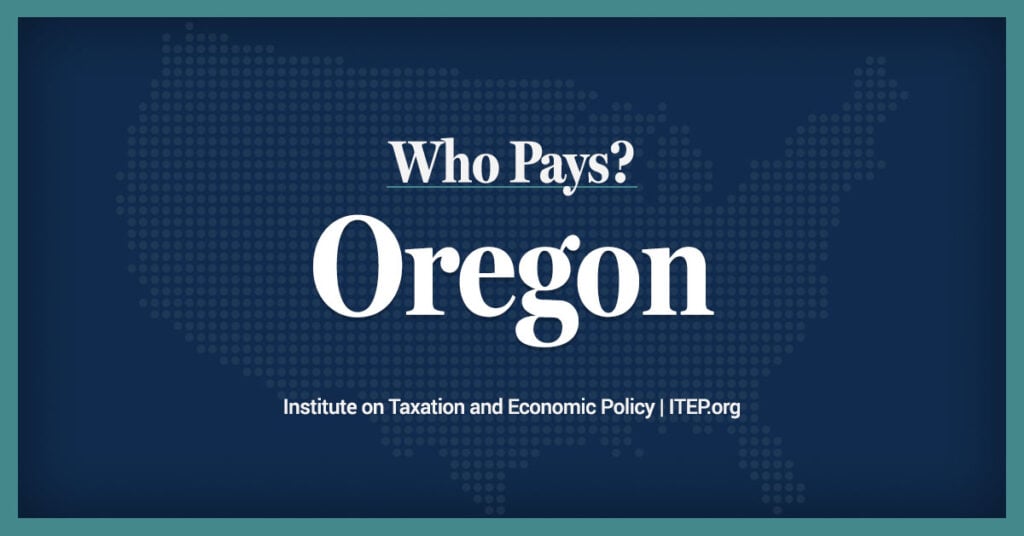(Original Post)
Email the author | Follow on Twitter
on December 28, 2013 at 9:00 AM, updated December 30, 2013 at 10:06 AM
Email
Get top news in your inbox every morning. Sign up for email updates here.
Sponsored Link
Oregon’s tax system is a cobbled-together mess.
Property tax rules are an odd mix of 1990s ballot measures, and decades-old deductions and exemptions clutter the income tax code. Corporate tax law is even more complicated.
So it’s understandable that Oregonians, when polled, reveal a weak grasp of the details.
“When you have one of the country’s weirdest tax systems, it’s no surprise that people get confused by it,” said Steve Novick, a Portland city commissioner and tax wonk.
But Oregon appears set for another conversation about taxes. Gov. John Kitzhaber has convened the top labor and business groups to propose reforms, and other politicians are talking reform, too.
With that in mind, here are some persistent misconceptions voters have about the state’s tax system — and how it really works.
Myth No. 1: The rich aren’t paying their fair share of income tax.
This often comes from middle-class or lower-middle-class voters who figure the rich are gaming the system while they’re saddled with an outsize income tax bill.
To understand why that’s not accurate, it’s important to understand some jargon. Taxes can be put into three categories. Progressive taxes put most of the burden on the wealthy. Regressive taxes put most of the burden on the poor. And proportional taxes are levied evenly regardless of incomes.
Oregon’s overall tax system is close to proportional, and the income tax is progressive.
The Institute on Taxation and Economic Policy, a nonprofit based in Washington, D.C. that promotes progressive tax policy, calculates the share of family income spent on taxes each year. According to its 2013 report, every income group in Oregon spent between 7 and 8.3 percent of income on state and local taxes.
Looking at income taxes alone, the lowest 20 percent of earners paid 1.9 percent of family income while the top 1 percent paid 7 percent.
Myth No. 2: I’m getting a kicker rebate because I overpaid my taxes.
Oregon’s unique kicker tax rebate is one of the hardest tax policies to understand.
Most taxpayers get a tax refund when their employers have withheld too much from their paychecks throughout the year. If that’s the case, they get a check from the state when they file a return.
The kicker law requires Oregon to send out rebates whenever income tax collections exceed projections by 2 percent or more. The Legislature enacted it in 1979 to limit the size of government, and voters approved it the next year.
Those projections are made by Oregon’s state economist, who tries to guess what Oregonians might earn in the coming years. If the economist guesses correctly, or too high, there’s no kicker. But if the state economist’s guess is too low and Oregonians earn far more and pay more tax than expected, the state hands out rebates.
So if you get a kicker refund, it’s not because you overpaid your taxes. It’s because the state economist made an inaccurate projection. Many lawmakers, by the way, would love to get rid of the kicker, which throws the state budget into turmoil. But voters made it clear they liked it in 2000 when they added the kicker to the Oregon Constitution.
Myth No. 3: Politicians are raising my property taxes.
Property taxes are even more confusing. Cities, school districts and other local governments levy taxes at a “permanent rate.” Voters can approve a temporary increase in taxes, known as a local-option levy, but local politicians can’t raise rates on their own.
The confusion comes when voters get their bills: “I didn’t vote on an increase, so why did my bill go up?”
Often the reason is because the “assessed value” of the property has increased.
When voters approved Measure 50 in 1997, each property was assigned an assessed value equal to 90 percent of the property’s 1995-96 value. At the time, that was significantly lower than the market value, or what the house would sell for.
If a property’s assessed value is lower than its market value, county officials can increase the assessed value by up to 3 percent a year. That’s often the source of a mysterious increase on a property tax bill. And because assessed values are often so much lower than market values, the assessed value can still go up even if the market value has dropped, such as in the last recession.
Myth No. 4: When a house is sold, its property tax assessment is reset to the sale price.
Assessed value doesn’t change with ownership. For the most part, only new investment or redevelopment can change a property’s assessed value beyond the 3 percent annual growth limit.
Myth No. 5: The Legislature gave Nike and Intel a a big tax break.
Last year, the Legislature met in special session to pass a bill allowing Kitzhaber to sign an agreement with Nike locking in for 30 years the way the state calculates Nike’s taxes. In December, Intel signed a similar agreement.
Neither agreement will lower Nike’s or Intel’s next corporate tax bill. So what did the agreements do, and why did Nike and Intel want them?
Both companies have employees and facilities around the globe. Oregon measures corporate sales to determine what percentage of corporate income is “Oregon income.”
If Oregon sales make up 2 percent of the company’s global sales, then 2 percent of company profits are subject to Oregon tax.
This is called “single sales factor apportionment,” and it’s popular with export companies because out-of-state sales don’t boost state tax.
If the Legislature increased corporate tax rates, Nike and Intel would still pay more. But if the state changed the way it calculates corporate income tax — for example basing on property instead of sales — so that Nike or Intel would pay more, either company could sue for the difference.
— Christian Gaston
By Christian Gaston | [email protected]
on December 28, 2013 at 9:00 AM, updated December 30, 2013 at 10:06 AM
Property tax rules are an odd mix of 1990s ballot measures, and decades-old deductions and exemptions clutter the income tax code. Corporate tax law is even more complicated.
So it’s understandable that Oregonians, when polled, reveal a weak grasp of the details.
“When you have one of the country’s weirdest tax systems, it’s no surprise that people get confused by it,” said Steve Novick, a Portland city commissioner and tax wonk.
But Oregon appears set for another conversation about taxes. Gov. John Kitzhaber has convened the top labor and business groups to propose reforms, and other politicians are talking reform, too.
With that in mind, here are some persistent misconceptions voters have about the state’s tax system — and how it really works.
Myth No. 1: The rich aren’t paying their fair share of income tax.
This often comes from middle-class or lower-middle-class voters who figure the rich are gaming the system while they’re saddled with an outsize income tax bill.
To understand why that’s not accurate, it’s important to understand some jargon. Taxes can be put into three categories. Progressive taxes put most of the burden on the wealthy. Regressive taxes put most of the burden on the poor. And proportional taxes are levied evenly regardless of incomes.
Oregon’s overall tax system is close to proportional, and the income tax is progressive.
The Institute on Taxation and Economic Policy, a nonprofit based in Washington, D.C. that promotes progressive tax policy, calculates the share of family income spent on taxes each year. According to its 2013 report, every income group in Oregon spent between 7 and 8.3 percent of income on state and local taxes.
Looking at income taxes alone, the lowest 20 percent of earners paid 1.9 percent of family income while the top 1 percent paid 7 percent.
Myth No. 2: I’m getting a kicker rebate because I overpaid my taxes.
Oregon’s unique kicker tax rebate is one of the hardest tax policies to understand.
Most taxpayers get a tax refund when their employers have withheld too much from their paychecks throughout the year. If that’s the case, they get a check from the state when they file a return.
The kicker law requires Oregon to send out rebates whenever income tax collections exceed projections by 2 percent or more. The Legislature enacted it in 1979 to limit the size of government, and voters approved it the next year.
Those projections are made by Oregon’s state economist, who tries to guess what Oregonians might earn in the coming years. If the economist guesses correctly, or too high, there’s no kicker. But if the state economist’s guess is too low and Oregonians earn far more and pay more tax than expected, the state hands out rebates.
So if you get a kicker refund, it’s not because you overpaid your taxes. It’s because the state economist made an inaccurate projection. Many lawmakers, by the way, would love to get rid of the kicker, which throws the state budget into turmoil. But voters made it clear they liked it in 2000 when they added the kicker to the Oregon Constitution.
Myth No. 3: Politicians are raising my property taxes.
Property taxes are even more confusing. Cities, school districts and other local governments levy taxes at a “permanent rate.” Voters can approve a temporary increase in taxes, known as a local-option levy, but local politicians can’t raise rates on their own.
The confusion comes when voters get their bills: “I didn’t vote on an increase, so why did my bill go up?”
Often the reason is because the “assessed value” of the property has increased.
When voters approved Measure 50 in 1997, each property was assigned an assessed value equal to 90 percent of the property’s 1995-96 value. At the time, that was significantly lower than the market value, or what the house would sell for.
If a property’s assessed value is lower than its market value, county officials can increase the assessed value by up to 3 percent a year. That’s often the source of a mysterious increase on a property tax bill. And because assessed values are often so much lower than market values, the assessed value can still go up even if the market value has dropped, such as in the last recession.
Myth No. 4: When a house is sold, its property tax assessment is reset to the sale price.
Assessed value doesn’t change with ownership. For the most part, only new investment or redevelopment can change a property’s assessed value beyond the 3 percent annual growth limit.
Myth No. 5: The Legislature gave Nike and Intel a a big tax break.
Last year, the Legislature met in special session to pass a bill allowing Kitzhaber to sign an agreement with Nike locking in for 30 years the way the state calculates Nike’s taxes. In December, Intel signed a similar agreement.
Neither agreement will lower Nike’s or Intel’s next corporate tax bill. So what did the agreements do, and why did Nike and Intel want them?
Both companies have employees and facilities around the globe. Oregon measures corporate sales to determine what percentage of corporate income is “Oregon income.”
If Oregon sales make up 2 percent of the company’s global sales, then 2 percent of company profits are subject to Oregon tax.
This is called “single sales factor apportionment,” and it’s popular with export companies because out-of-state sales don’t boost state tax.
If the Legislature increased corporate tax rates, Nike and Intel would still pay more. But if the state changed the way it calculates corporate income tax — for example basing on property instead of sales — so that Nike or Intel would pay more, either company could sue for the difference.
— Christian Gaston





